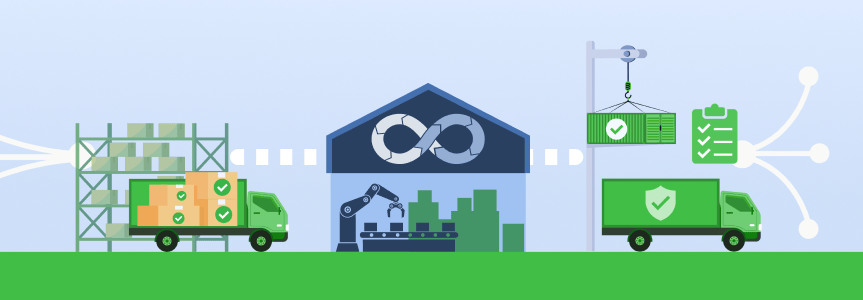How a software supply chain platform streamlines DevOps best practices
Today’s software developers are tasked with a lot more than just coding. To keep up with the fast-paced software-driven economy, they need to focus on automation, collaboration, security, distribution, data analysis, and agility to ensure quality builds and get releases to customers quickly and securely. DevOps and security professionals need a centralized system of records that provides visibility across the business. And developers need a fully integrated secure automation platform at their fingertips. This is the only way to deliver secure software at the speed of DevOps and meet the speed promises of DevOps.
So, what’s a software supply chain platform?
A true software supply chain platform goes beyond centralizing DevOps best practices. It offers:
- Secure management and control of building, curating, distributing and automating software updates at scale.
- Hybrid and multi-cloud environments without sacrificing speed or availability.
- A single system of record for the entire software supply chain, that provides full visibility.
- Integrated security to help identify, protect and remediate vulnerabilities, and automate processes to ensure consistency and traceability.
- A universal central repository for builds and binaries with the ability to deliver and trace current or prior versions.
- Secure and compliant delivery of tools, processes, artifacts and repositories, and provides full visibility across the software supply chain.
To get software from the supplier to the customer, organizations need a software supply chain platform that reduces complexity and provides scalability and reliability in four ways:
- Provide consistency and security in the software delivery flow
- Act as the conveyor belt for automated manufacturing
- Provide insight into the software supply chain
- Provide unified visibility, security, and automated centralized management
-
Consistency and security in the software delivery flow
Every delivered application is composed of artifacts — binaries, dependencies, images — that connect to each other. The quality of this software depends on the quality of the releasable assets that go into it. When artifacts are governed through a unified end-to-end platform, organizations can align on software development lifecycles and security best practices.
-
The conveyor belt for automated manufacturing
From development to deployment, the software supply chain platform creates, tracks and manages the most valuable assets (i.e., software binaries) at every stage of software development from the open source curation process to the build process to consumption in the deployment of software applications. This conveyor belt of DevOps serves as a single system of record for automating the management of secure software releases at scale.
Organizations require a reliable and secure solution that allows them to oversee and regulate both end-to-end automation workflows and the orchestration of binaries. This solution offers organizations the utmost visibility and assurance in their entire software supply chain. -
Deeper insight to control and secure the software supply chain
While the software bill of materials (SBOM) is a great starting point for ensuring security and compliance with software regulations, it’s the extra information that’s not in the SBOM (i.e., what we call SBOM++), which includes the metadata, critical software supply chain information, lineage and components, and workstream information (i.e., promotions, approvals, and exceptions) that’s the most valuable for organizations. Organizations must collect this extra information to ensure their operations are secure and compliant, and to improve overall software supply chain efficiency.
To collect this extra information, organizations need to be able to manage their software supply chain, allowing control of all software artifacts from a single point. A secure software supply chain platform is a combination of security and supply chain management that eliminates integration ownership and point solutions, providing richer data, more accurate results, and comprehensive context for risk-based remediation.
-
Unified visibility, security, and automated centralized management
A software supply chain platform tracks and controls software assets throughout the development lifecycle. It’s a single system of record as releases advance towards production. Integrated security features help identify, protect, and remediate against threats and vulnerabilities.
The platform provides trusted, automated centralized management with a unified experience for clear visibility, holistic security, and a single system of record for managing the software supply chain. It makes sure that assets are available on-demand, secured, traceable, tamper-proof and with high throughput. This includes managing binaries, container images, CI/CD pipelines, security and compliance, and software distribution to last-mile deployments across runtime environments and edges.
When your artifacts are governed through a single source of truth, your entire organization can align onto the same DevOps workflows and best practices that will provide quality, security, and accelerate software release velocity.
Streamline DevOps best practices with the JFrog Software Supply Chain Platform
The JFrog Software Supply Chain Platform provides the unified experience necessary to streamline DevOps best practices and manage the entire software supply chain securely and efficiently.
The JFrog Software Supply Chain Platform allows teams to:
- Automate operations and manage software packages with enhanced visibility and holistic security through its single system of record
- Achieve trusted, continuous updates in DevOps
- Ensure the secure and successful delivery of software releases





